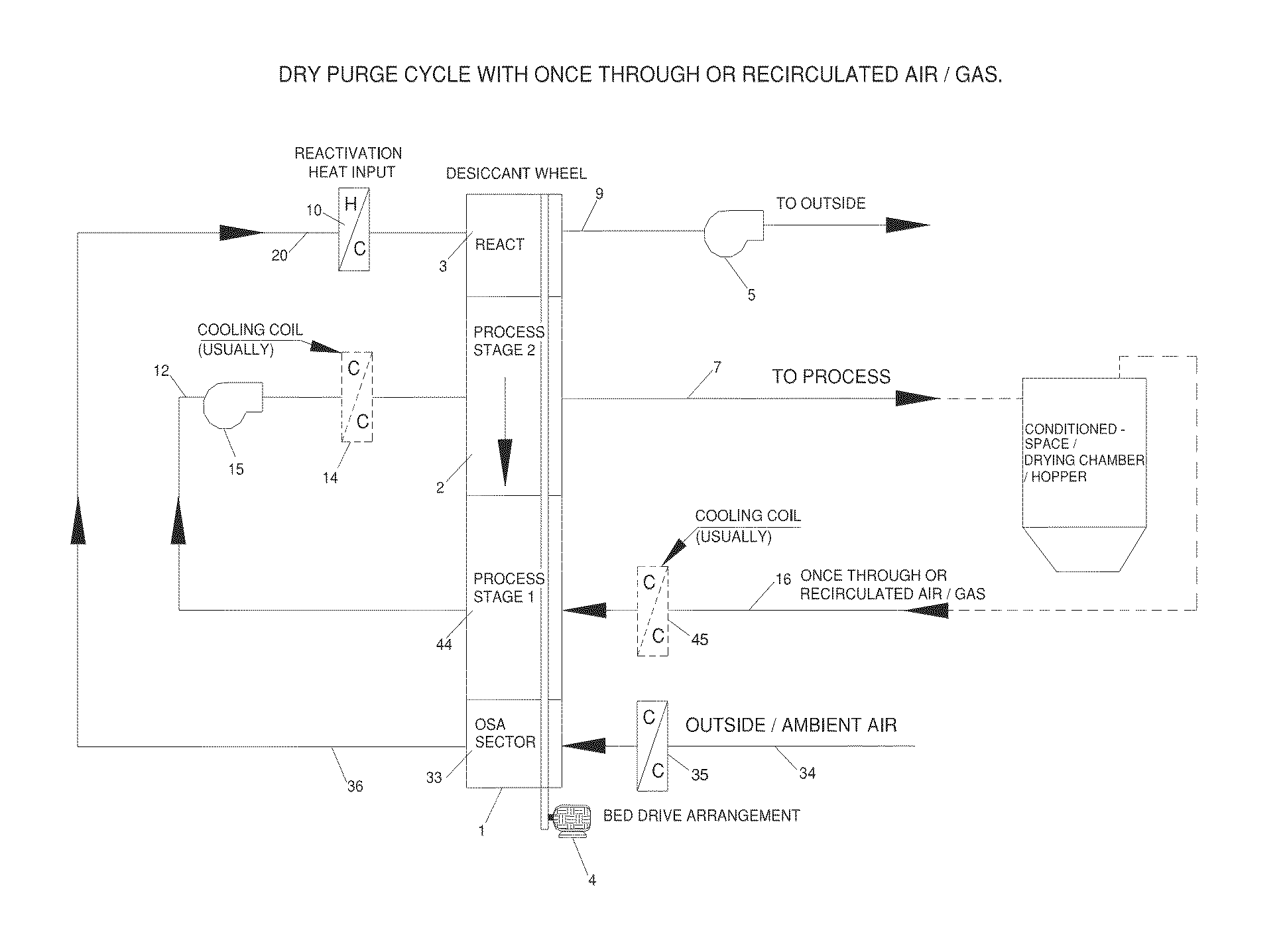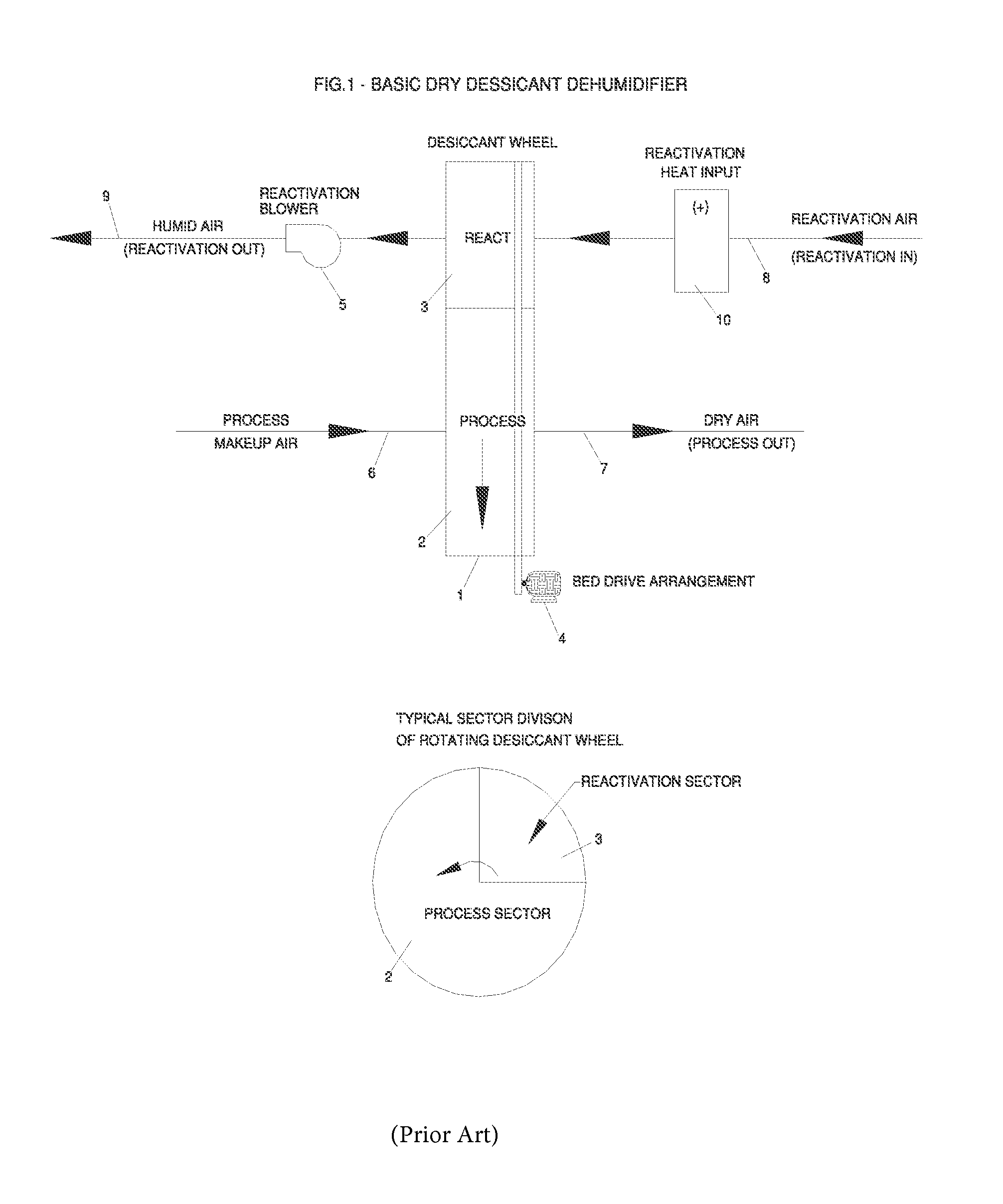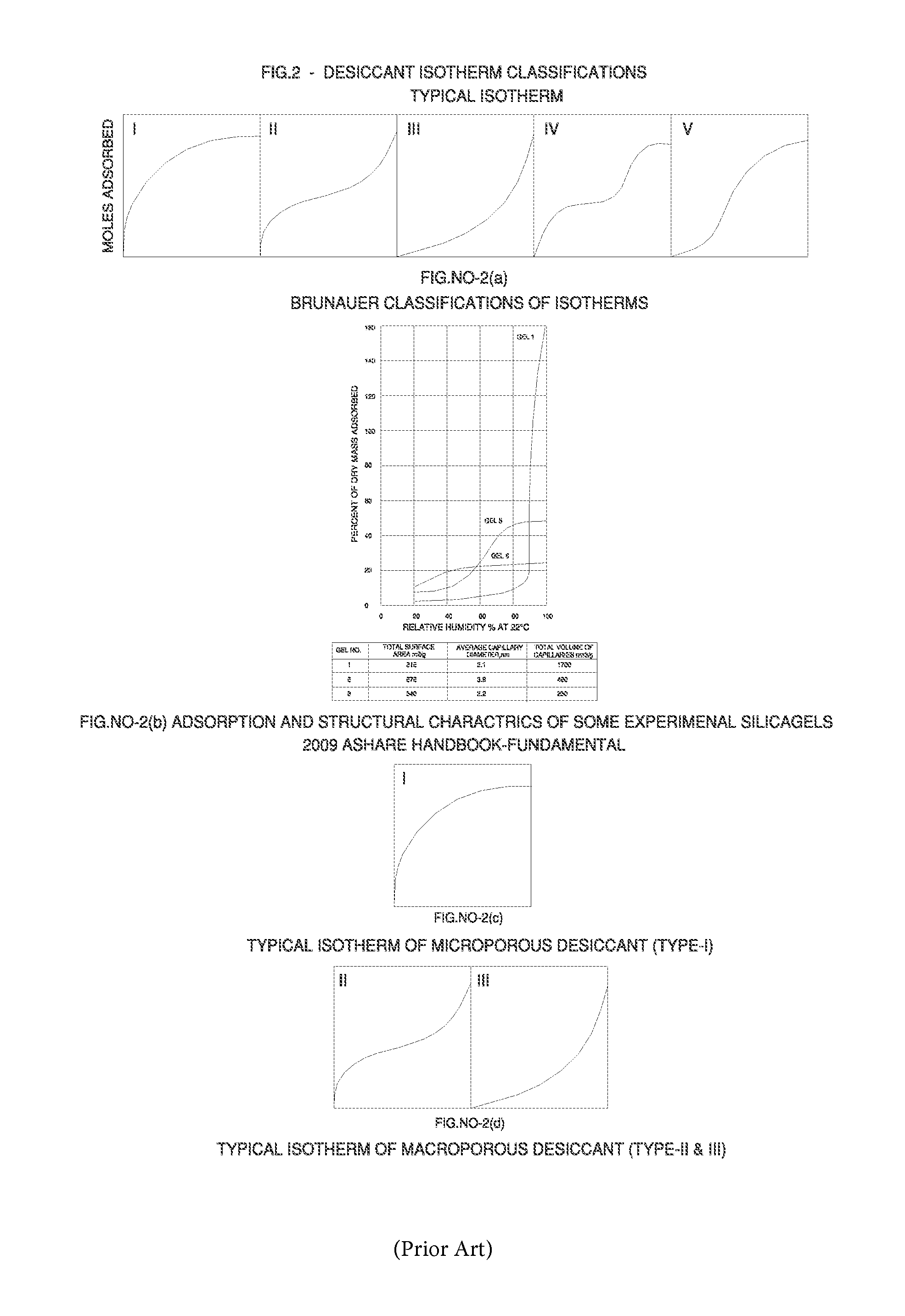System and method for improving the performance of desiccant dehumidification equipment for low-humidity applications
a technology of desiccant dehumidifier and low-humidity, which is applied in the direction of lighting and heating apparatus, heating types, and separation processes, etc., can solve the problems of increased cooling load of process air conditioning equipment, increased size, cost and complexity, and dehumidifier may not be able to deliver air at a sufficiently low humidity
- Summary
- Abstract
- Description
- Claims
- Application Information
AI Technical Summary
Benefits of technology
Problems solved by technology
Method used
Image
Examples
Embodiment Construction
[0049]FIG. 7 is a schematic representation of the current invention configured to dehumidify a mixture of return (or recirculated) air 16 from a low-humidity space or process and outside air 36 for pressurization / makeup. The arrow inside the desiccant wheel indicates the sequence in which the wheel 1 rotates through the sectors, i.e. it rotates sequentially through the reactivation 3, process 2 and outside air 33 (or preconditioning) sector, and then back to the reactivation sector 3.
[0050]FIG. 7A is similar to FIG. 7 except a purge sector 17 has been added sequentially between the reactivation sector 3 and the process sector 2. The purge sector precools the desiccant media leaving the reactivation sector before it enters the process sector, improving the dehumidification performance of the unit and decreasing the reactivation heat carryover from the reactivation to the process sector. The purge discharge air 37 may be recycled to form at least a portion of the reactivation supply a...
PUM
| Property | Measurement | Unit |
|---|---|---|
| equilibrium relative humidities | aaaaa | aaaaa |
| humidities | aaaaa | aaaaa |
| adsorption capacity | aaaaa | aaaaa |
Abstract
Description
Claims
Application Information
 Login to View More
Login to View More - R&D
- Intellectual Property
- Life Sciences
- Materials
- Tech Scout
- Unparalleled Data Quality
- Higher Quality Content
- 60% Fewer Hallucinations
Browse by: Latest US Patents, China's latest patents, Technical Efficacy Thesaurus, Application Domain, Technology Topic, Popular Technical Reports.
© 2025 PatSnap. All rights reserved.Legal|Privacy policy|Modern Slavery Act Transparency Statement|Sitemap|About US| Contact US: help@patsnap.com



